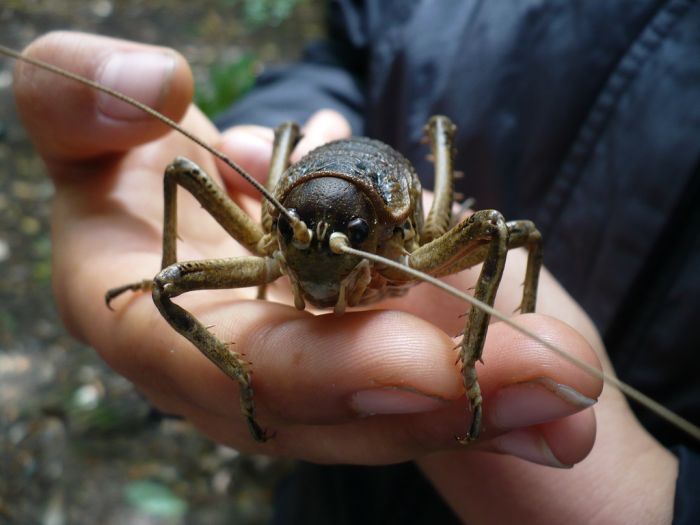Giant Weta
|
Weta is the name given to about 70 insect species endemic to New Zealand. There are many similar species around the world, though most are in the southern hemisphere. The name comes from the Māori word 'wētā' and is the same in the plural (like 'sheep'). The Māori word for the giant weta is 'wētā punga' (lumpy or jointed weta).
General characteristics
Many weta are large by insect standards and some species are among the largest and heaviest in the world. Their physical appearance is like a katydid or long-horned grasshopper or a cricket, but the hind legs are enlarged and usually very spiny. Many are wingless. Because they can cope with variations in temperature, weta are found in a variety of environments including alpine, forests, grasslands, caves, shrub lands and urban gardens. They are nocturnal and all New Zealand species are flightless. Different species have different diets. Most weta are predators or omnivores preying on other invertebrates, but the tree and giant weta eat mostly lichens, leaves, flowers, seed-heads and fruit.
|
|















